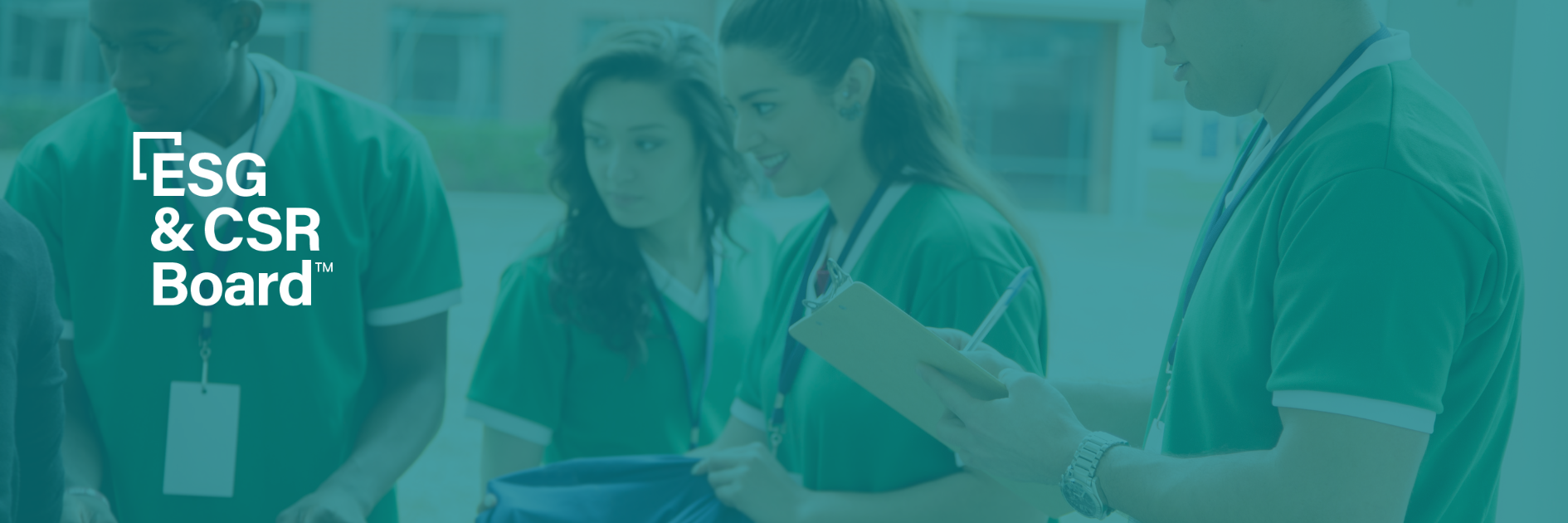Key takeaways:
- The majority of today’s large companies are partnering with global and local nonprofits for disaster response – but only a small percentage are working together.
- Corporations can combine their complementary expertise and resources to maximize impact, particularly when facing more frequent disasters and potentially higher budgets.
- Peer networking can be an invaluable tool for fostering collaboration, whether through formal partnerships or real-time benchmarking.
If extraordinary problems require extraordinary solutions, then natural catastrophes and humanitarian crises certainly call for an all-hands-on-deck effort.
No single entity — public, private, or nonprofit — is equipped with all the resources needed to react to large-scale disasters. Thus, collaboration is the cornerstone of crisis response.
Yet, a study by The Conference Board found that while nearly 90% of companies collaborate with international, national, and local humanitarian organizations, only 28% have partnered with other for-profit entities for disaster response.
They found this rate concerning and reported there’s significant potential for companies to improve the effectiveness, efficiency, and sustainability of their disaster response efforts through peer collaboration.
In a time when disasters are growing increasingly severe and expensive, and companies are being pushed to do more with less, can corporate philanthropy leaders build partnerships to create bigger results?
Recently, senior CSR leaders came together for a panel discussion, Future-Proofing Your Disaster Relief Strategies, hosted by the ESG & CSR Board.
Panelists outlined the benefits of fostering collaboration around disaster response and how they’re leveraging partnerships and peer networks to maximize their resources.

Whether it’s a community, partner, or organization, it’s good for us to understand what they do well and have challenges with. Then we help close those gaps.
Maurice Ramsey, Amazon Web Serivces
Closing Gaps in the Disaster Relief Space Through Corporate Partnership
From distribution networks to advanced technology, each enterprise holds a unique set of knowledge and resources that could aid communities in times of crisis.
Amazon Web Services Global Leader of Disaster Response and Humanitarian Affairs Maurice Ramsey suggested that companies can combine their complementary skills and efforts to fill any gaps in the relief space.
“The first thing we do at Amazon is work backward from our customers,” Maurice told the panel. “We take that same mindset, and we apply that across the disaster. Whether it’s a community, partner, or organization, it’s good for us to understand what they do well and have challenges with. Then we help close those gaps.”
One example of two corporations working in tandem to provide aid occurred during the California Wildfires of 2018 – the most devastating and destructive wildfire season in the state’s history.
When communities were facing widespread evacuations, two Bay-area companies, Airbnb and Lyft coordinated to provide support.
Lyft provided free rides while Airbnb activated its Open Homes Program, allowing hosts to offer free temporary housing to both displaced residents and first responders.
Leveraging Peer Connections to Gut-Check Your Response
Beyond more formal partnerships, panelists also highlighted the value of peer benchmarking, particularly amid crisis moments.
Karen Little, Senior Lead of Rapid Response and Strategic Partnerships at PayPal, said, “I have a lot of people on direct dial. I’m picking up my phone and saying, ‘Okay, what are you guys doing?’ We always want to talk to our friends.”

It’s helpful to know who is doing what. It makes it easier for us to be able to coordinate our response and make sure that we’re having the most meaningful impact.
Erin Connor, Cisco
Gauging other companies’ response plans can help you build confidence in your own recommendations, which can be particularly helpful when communicating them to your leadership.
“It’s helpful to know who is doing what,” Erin Connor, Director of Crisis Response at Cisco, said. ““It makes it easier for us to be able to coordinate our response and make sure that we’re having the most meaningful impact.
To gain that perspective, panelists reported using a tech-sector working group that communicates via WhatsApp, in addition to:

I think there’s a lot more here. This is a space where we can be doing even more together.
Karen Little, PayPal
Gain More Insights from CSR Leaders
Corporations are key players in global disaster response, and as the frequency, scale, and cost of disasters continue to rise, there’s a clear case for stronger collaboration.
Looking ahead, Karen told the panel that companies could be doing even more to work together to maximize their combined impact.
“I think there’s a lot more here,” Karen said. “This is a space where we can be doing even more together. Maybe it’s supporting certain partners where we overlap, and maybe we’re doing something to feature them for our customers.”
Previously, senior leaders in the ESG & CSR came together for a corporate impact collaboration workshop where CSR leaders from high-profile companies presented their projects and visions to their peers in a facilitated space to find potential collaborations.
It’s just one of the many examples of ESG & CSR Board members coming together to offer unbiased support. If you’re interested in learning more, get in touch below.



